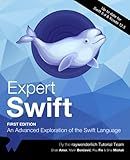Best Laravel Controller Tutorials to Buy in October 2025
To create a controller in Laravel, you first need to create a new file in the app/Http/Controllers directory. By convention, controllers in Laravel are named using "CamelCase" with the word "Controller" appended to the end.
For example, let's say we want to create a controller named "UserController". The file should be named "UserController.php" and should contain a class definition for the controller.
Next, open the file and declare a class like this:
namespace App\Http\Controllers;
use App\Http\Controllers\Controller;
class UserController extends Controller { // }
Note that the App\Http\Controllers\Controller class is extended in order to inherit some basic functionality provided by Laravel.
Inside the class, you can define methods to handle various actions or requests. For example, if you want to create a method to display a user's profile, you can add the following method inside the UserController class:
public function show($id) { $user = User::find($id);
return view('users.profile', \['user' => $user\]);
}
In this example, the show method takes an $id parameter representing the user's ID. It then uses the User model to find the user with that ID, and passes the retrieved data to a view called users.profile, along with the $user variable.
Once you've defined your controller, you can use it to handle routes in your application. You can do this by adding a route definition in the routes/web.php file or any other appropriate route file:
Route::get('/users/{id}', 'UserController@show');
In this example, when a GET request is made to a URL like /users/1, the show method of the UserController will be called, passing the id as a parameter.
Remember to import the required classes at the top of your file if you're using any models or other dependencies, for example:
use App\Models\User;
That's how you create a controller in Laravel. Controllers allow you to organize and handle the logic for various actions in your application, providing a central place to manage HTTP requests and responses.
What is composer?
Composer is a dependency management tool for PHP. It allows you to declare the libraries and packages your project depends on and manages the installation and updating of those dependencies. It simplifies the process of managing and integrating external libraries and frameworks into your PHP projects.
What is the purpose of the "show" method in a Laravel controller?
The purpose of the "show" method in a Laravel controller is to retrieve and display a single resource. This method is used to handle the HTTP GET request and typically retrieves the resource data from the database and returns it to the user.
In the context of a RESTful API, the "show" method corresponds to the retrieve operation, where it fetches a specific resource by its identifier. It is commonly used when a user wants to view the details of a specific resource, such as viewing a single blog post or a specific user profile.
Inside the "show" method, you would typically define the logic to fetch the resource data, handle any errors or exceptions, and return a response. The response can be in the form of an HTML view or a JSON representation of the resource.
What are controller actions in Laravel?
Controller actions in Laravel are methods within a controller that define the behavior and operations that should be performed when a specific route is accessed. These actions handle the logic and operations required to process requests and generate responses. They can interact with models, perform database operations, and return views or JSON responses. Controller actions play a crucial role in handling the application's business logic and determining the response to be sent back to the user.





